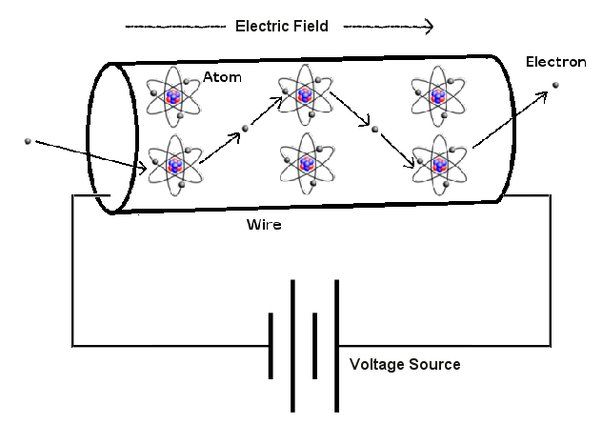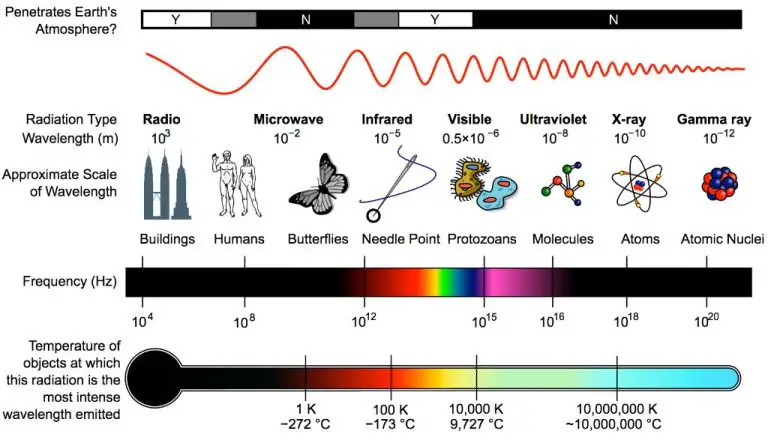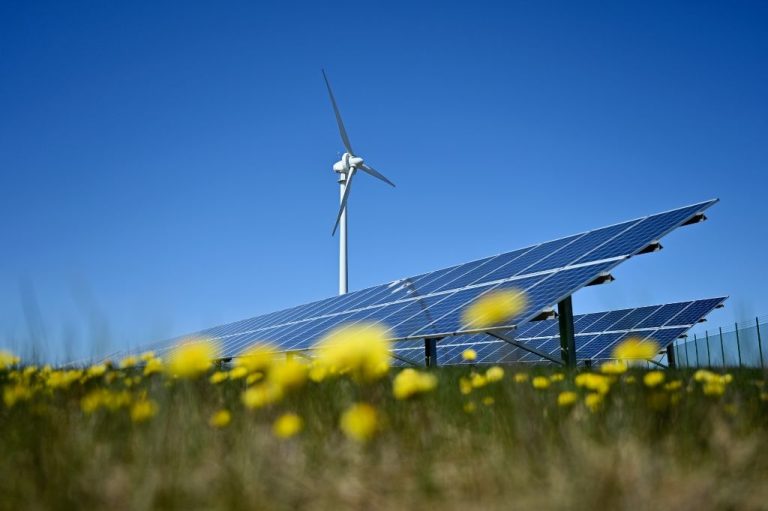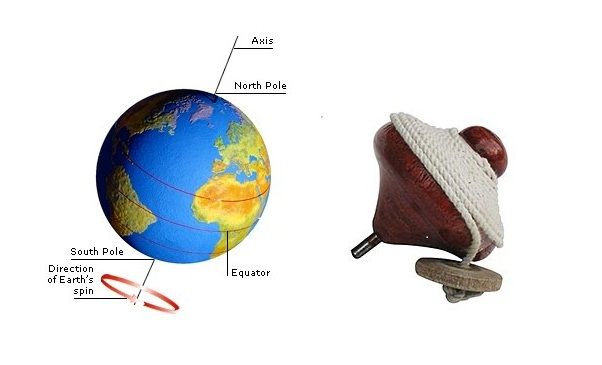What Are Types Of Transmission System In Electrical?
Overview of Electrical Transmission Systems
Electrical transmission systems are vital infrastructure that move electricity from power generation plants to end use customers. Without transmission systems, electricity would not be able to travel the distances needed from generators to homes, businesses, and industries.
Transmission systems face several key challenges. Electricity is generated far from population centers and must be moved long distances to reach load centers. Transmitting electricity over hundreds of miles leads to power losses along the way that must be accounted for. The varying terrain and landscapes that transmission lines traverse also pose difficulties. Optimizing transmission to maximize efficiency and minimize costs is an ongoing effort for utilities and system operators.
The purpose of transmission is to act as the critical link between electricity generators like power plants, renewables, etc and end use customers who require power. Transmission networks allow coordination between all aspects of power generation and distribution through sophisticated monitoring and control technologies to match supply and demand.
AC vs DC Transmission
Alternating current (AC) and direct current (DC) are the two main types of electrical transmission systems. AC transmission is more common and has dominated long distance transmission for over a century. This is because AC voltage can be easily increased or decreased using a transformer. Higher voltage means lower current for the same amount of power, which reduces line losses over long distances.
However, DC transmission is gaining popularity in some applications. HVDC lines have lower losses than AC for the same voltage over very long distances. DC transmission may also be used for connecting unsynchronized AC networks and for transmitting power underwater over long distances. HVDC lines are more expensive than AC since they require converter stations at each end.
Overall, AC transmission systems continue to be more prevalent and cost effective for most grid applications thanks to transformers allowing easy voltage conversion. But HVDC is becoming more popular for niche long distance transmission or asynchronous connections where AC is less practical.
Overhead Transmission
Overhead transmission is the most common type of transmission system used for electrical power. It consists of high-voltage transmission lines suspended above ground on transmission towers or utility poles. The conductors used for overhead lines are bare and exposed to the outdoor environment.
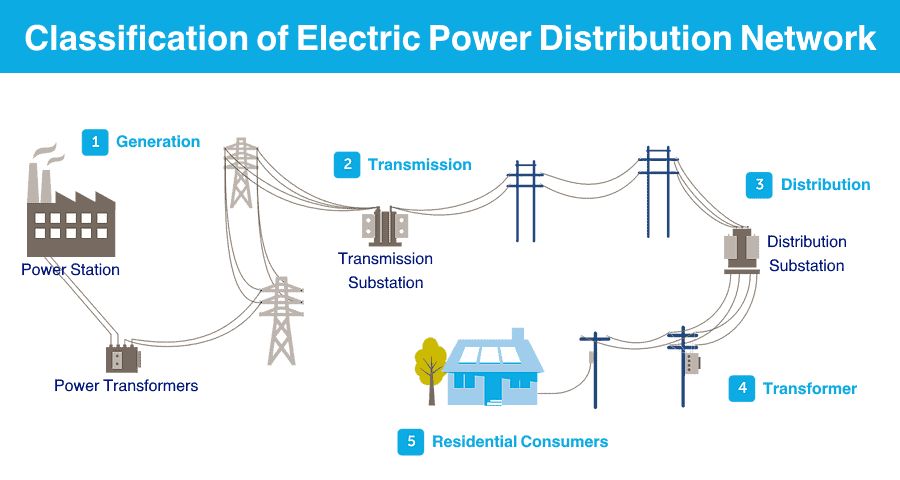
Overhead transmission has several advantages. It is much cheaper to construct compared to underground transmission. Since the lines are elevated, they don’t require trenching and have lower heat dissipation. Transmission towers and poles provide easy access for repairs and maintenance. Insulators, conductors, and line hardware for overhead lines are also economical.
However, overhead transmission also has some drawbacks. The lines are exposed to various weather risks like wind, storms, ice, and snow which can disrupt power delivery. Lightning strikes can damage insulators and transmission towers. The large size of transmission towers makes them visually unappealing. There are also potential hazards for low flying aircrafts and concerns about ground clearance.
Overall, despite the risks, overhead transmission remains a simple and economical way to transmit large amounts of electrical power over long distances between power plants and substations across regional, national and even international grids.
Underground Transmission
Underground transmission refers to electrical power lines that are buried underground rather than suspended overhead. This type of transmission has several advantages:
Underground cables are more reliable and less prone to faults caused by weather events, animals, vegetation, human interference, etc. Since the cables are buried and protected, they are less likely to be damaged or disrupted.
Underground transmission uses insulated cables that are buried below the ground or underwater. The cables are housed in protective conduits or pipes. Common cable types used include high-voltage alternating current (HVAC), high-voltage direct current (HVDC), and extra-high voltage (EHVAC) cables.
Underground transmission requires lower maintenance compared to overhead lines. Buried cables don’t need vegetation management, regular inspections for wear and tear, or repairing damage from storms. Underground systems have lower operational costs.
The main disadvantage of underground transmission is higher installation costs. It costs roughly 4 to 14 times more to bury cables than to suspend overhead transmission lines. This makes it economical only in urban areas or over long distances where overhead lines are not feasible.
Submarine Transmission
For crossing large water bodies like rivers, lakes, bays or oceans, submarine power cables are used for transmitting electricity. These cables are laid on the floor of the water body to connect networks separated by large distances. Submarine cables provide an alternative to overhead lines which would require much longer routes over land to circumvent the water body.
Submarine cables are designed with insulation and sheathing that can withstand high pressure and corrosion from water and marine life. The cables use copper or aluminum conductors and XLPE or fluid-filled pipe type insulation. Armoring and metallic sheaths provide mechanical protection. Optical fibers may also be integrated in the cable for communication and monitoring.
Some of the longest submarine cables are HVDC links which can efficiently transmit large amounts of power over hundreds of kilometers under water with lower losses. The costs of submarine cables are much higher than overhead lines or underground cables on land. But they provide a reliable way to connect networks across water bodies where overhead lines are not feasible.
HVAC Transmission
High voltage alternating current (HVAC) transmission refers to electrical power transmission using alternating current at high voltages, typically above 110 kV. HVAC transmission is the most common form of electricity transmission for long distances. There are several key advantages of HVAC transmission compared to lower voltage transmission:
- Higher voltages allow for lower transmission losses. Power loss in electrical transmission lines is proportional to the square of the current. For a given amount of power, higher transmission voltages require lower currents, greatly reducing losses.
- HVAC allows for efficient power transformation. Using transformers, HVAC voltages can easily be stepped up for efficient long distance transmission, then stepped down for distribution.
- AC transmission allows for reactive power control. Reactive power can be dynamically managed to optimize grid efficiency and stability.
Some disadvantages of HVAC transmission include higher costs for high voltage equipment and the need to synchronize power sources precisely. However, the benefits for efficient bulk power transmission over long distances make HVAC the predominant transmission technology for grid networks worldwide.
HVDC Transmission
High voltage direct current (HVDC) transmission systems are often used for very long distance transmission of electrical power. While alternating current (AC) is commonly used for transmission over shorter distances, HVDC has some advantages for long distance transmission:
- Lower transmission losses – HVDC lines have lower resistive losses per length compared to AC lines at the same voltage.
- Asynchronous interconnections – HVDC allows power transmission between unsynchronized AC distribution systems.
- Controllability – Power flow in HVDC lines can be controlled independently of the phase angle between source and load.
- Lower costs – HVDC conversion equipment costs are lower than AC systems at very high voltages and powers.
HVDC is commonly used for transmitting large amounts of power point-to-point over long distances like across countries or between islands and mainland. Undersea HVDC systems are also becoming more common. The development of voltage source converter (VSC) technology has also enabled more advanced HVDC system configurations and control capabilities.
Smart Grid Technologies
Smart grid technologies are transforming traditional electrical grids into more intelligent, automated, and efficient networks. Key features of smart grids include:
Automation and Remote Control
Smart grids utilize computer-based remote control and automation to improve the efficiency, reliability, and sustainability of grid operations. Technologies like smart meters, intelligent electronic devices, and distributed control systems allow utilities to monitor, analyze, and control the two-way flow of electricity more effectively.
For example, smart meters provide real-time feedback on energy usage and allow for remote connection and disconnection of service. Substation automation systems use data from intelligent sensors to automatically detect and respond to problems. Advanced software platforms can optimize grid performance and enable automated control of voltage levels and demand response.
Real-Time Monitoring
Smart grids perform continuous real-time monitoring of electricity supply and demand using intelligent sensors and advanced metering infrastructure. This allows utilities and grid operators to better visualize and understand what is happening across the network.
Real-time monitoring provides system alerts, tracks emerging problems, and enables a faster and more targeted response. It also generates detailed data analytics that can inform maintenance, planning, and expansion decisions to optimize grid investments.
Overall, smart grids utilize modern communications and software to make the electrical grid more observable, controllable, automated, and intelligent. These capabilities underpin the improved efficiency, sustainability, reliability, and flexibility of smart grid networks.
Microgrids
Microgrids are smaller localized electricity grids that can operate independently or in conjunction with the larger main power grid. They are designed to utilize distributed energy sources like solar panels, wind turbines, combined heat and power plants, battery storage and diesel generators. The key benefits of microgrids include:
Improved reliability: Microgrids can disconnect from the main grid and operate autonomously during power outages or other disturbances in the main grid. This makes them less susceptible to widespread blackouts. The military often utilizes microgrids to ensure electricity supply security.
Efficiency: Microgrids allow for optimal localization of energy generation, reducing transmission losses that come from electricity travelling long distances. Energy can be generated and consumed within the same small area.
Use of renewables: Microgrids more easily incorporate renewable energy sources like solar and wind. The intermittent nature of renewables is balanced locally using other generators, storage and responsive load management.
Lower costs: Microgrids can reduce infrastructure and operational costs for utilities and consumers by optimizing local generation and reducing peak demand charges. Capital costs may increase initially but can provide longer term savings.
Microgrids are an important innovation in making the overall electrical grid more resilient and sustainable. Though adoption is still relatively limited, their deployment is expected to accelerate as costs come down and technology improves.
Future Trends in Electrical Transmission
The electrical transmission landscape is evolving to meet new demands and adopt innovative technologies. Some key trends shaping the future of transmission systems include:
Increasing Renewable Integration
The growth of renewable energy sources like wind and solar is driving a need for transmission upgrades and new lines. Transmission infrastructure will be critical for delivering renewable power from generation sites to load centers. New high-voltage DC (HVDC) lines that can carry power over long distances with low losses will facilitate connecting remote renewables.
Growing Electricity Demand
Rising populations and development is leading to growth in electricity demand. Emerging economies are industrializing and consuming more power. Electrification of transportation, heating, and other sectors is also increasing load on grids. Upgrading and expanding transmission networks will be vital to meet future demand.
New Materials and Technologies
Innovation in materials, power electronics, sensors, and information technology will enable smarter and more dynamic transmission grids. For example, new high-temperature superconducting materials can reduce transmission losses. Improved grid monitoring, control, and coordination through digitalization will also allow more optimization of transmission assets.


